- The Basics of Valvetrain Technology -
Cams, Lifters, Pushrods, Rockers, Springs, Retainers, Valves
NOTE: All our Products, Designs and Services are ORGANIC, GLUTEN-FREE, CONTAIN NO GMO's, and will not upset anyone's precious FEELINGS
BACKGROUND
As we presented in a previous section, the flow capability of the cylinder heads, intake passages and exhaust passages in a 4-stroke ("Four-Cycle") engine is extremely important to engine performance. However, the motion of the valves relative to the position and velocity of the piston is perhaps even more important in determining the power a given configuration can produce.
The motion of a valve is generated by the shape of the cam lobe, which pushes on a cam follower of some sort, which then connects to the valve by a variety of different mechanisms. The system in which we are most interested here is the cam follower in a bore, driving a pushrod which moves a pivoted lever ("rocker arm") which presses on the tip of the valve and imparts reciprocating motion to open the valve. In this system, closing the valve is done by the valve spring. The following picture (courtesy of Ford Motor Company ) shows the components in this system.
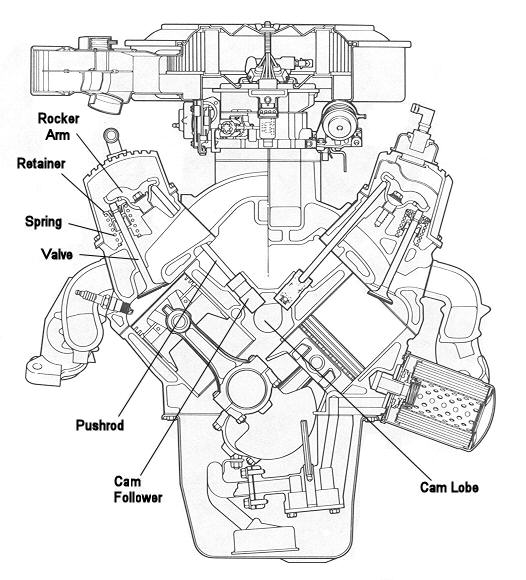
Figure 1: Pushrod Engine Cross Section (Ford Smallblock)
The system that is the focus of this article, the pushrod / rocker-arm / overhead valve mechanism, has been used in domestic automotive engines since the early part of the 20th century, because of the demonstrably-superior breathing capability provided by "valve-in-head" designs compared to the prevalent "side-valve" or "flathead" engine design in which the valves are in the engine block alongside the cylinders.
This system saw early mass production in the Chevrolet inline-4 that was produced until 1936, and which was replaced by the Chevrolet inline 6 starting in 1935. The system began to dominate domestic production automotive engines beginning with the 1949 Oldsmobile "Rocket" 324 cubic inch V8. Because of its inherent performance and cost effectiveness, the pushrod / rocker arm OHV system has continued to be refined, and is still used in many contemporary (early 21st century) engines. One of the most noteworthy is the prolific family of excellent GM 4th-generation smallblock V8 engines (the "LS" engine family).
Note that there are numerous other systems, ranging from the primitive "side valve" engines in which the cam operates a follower in a bore, which then directly operates the valve, to a variety of different overhead cam configurations which operate the valves either directly from the cam follower ("direct-acting") or by means of any of several different rocker arm implementations, and reaches extreme complexity with systems in which there is one cam profile to open the valve and a different complimentary cam profile which directly closes the valve, eliminating the need for a valve spring (known as "desmodromic" systems).
Here is a more thorough look into the details of this pushrod-OHV system. In a 4-stroke engine, the crankshaft drives the camshaft at 1/2 crankshaft speed (obviously, since each valve opens and closes once for evvery two rotations of the crankshaft) . The camshaft typically contains one cam lobe for each valve in the engine, although that is not necessarily the case. (For example, in opposed-layout engines such as the VW-Porsche horizontally-opposed pushrod engines, two intake valves, one on each side of the engine, are operated by a single lobe driving two different followers.) For convenience, Figure 1 is reproduced below in order to assist the following descriptions.

Figure 1 (repeat): Pushrod Engine Cross Section (Ford Smallblock)
FUNDAMENTALS
As each cam lobe rotates, it contacts the cam follower (aka "lifter", aka "tappet") and drives the follower away from the camshaft rotational axis. The cam follower, which is constrained by the bore in which it moves, produces a linear motion along the bore axis. That linear motion of the follower is transmitted to one end of the pushrod. The other end of the pushrod moves in a somewhat less predictable manner, constrained by the pushrod socket in the rocker arm, but also disturbed by pushrod deflections, both compressive and flexural, which vary with the forces and excitations applied to the pushrod. The rocker arm rotates about its pivot point (typically either a shaft or a semi-ball on a stud), and the other end of the rocker arm contacts the tip of the valve stem and causes the valve to move along the axis of the bore ("valve guide") in which it rides.
It is sometimes believed that the cam lobe is only able to directly control the opening portion of the valve motion, by pushing the follower away from it, and that the valvespring controls the closing half of the cycle.
That view is very incorrect. In actuality, the cam lobe and the valvespring, when operating correctly, work in close harmony throughout the opening-closing cycle to produce the desired valve motion. The cam lobe provides the operating force during approximately tie first half aof the opening cycle and the last half of the closing cycle, and, the valve spring provides the operating forces throughout approximately the last half of the opening cycle and the first half of the closing cycle. This concept will be made much more clear later in the discussion.
An excellent example of the influence which cam lobe profiles have on performance is in the evolution of what are known as "restricted" race engines. These engines are "restricted" with respect to the modifications that can be done to them, in an effort to limit the power, and therefore to limit (in theory, but not in practice) the cost of the engines.
The most common engine in this category is an iron-block 355-cubic inch small-block Chevy (SBC) V8, which is commonly limited to stock (unported, unmodified) production cast-iron cylinder heads and intake manifolds. In certain classes these engines are limited to a single two-barrel carburetor which, in stock form, can't flow more than 500 CFM of air at a pressure differential of 3" of water. This configuration represents the very incarnation of a "flow-limited" engine.
In the early development of these engines, the max power we could coax from these engines was in the 425 HP neighborhood (which, in itself, is impressive). Since approximately 2006, we have passed 500 HP and are continually, but slowly, approaching 525, while using essentially the same heads and manifolds (as specified by the NASCAR rules for these engines). All that development costs MONEY, and the cost of these engines is prohibitively high for many racers.
One major factor in that progress has been the development of ever-more aggressive cam lobe profiles, which are optimized to this particular flow-limited configuration. Of course, as you might expect, these cam profiles are very hard on the valve train components, so the successful operation of the system depends on the development of ever-more sophisticated valvetrain components. Here, we will attempt to explain why, and how different requirements can be met through the various compromises taken in cam lobe design.
Given the inherent limitations of that layout at high engine speeds, it is a huge tribute to the skills and knowledge of the NASCAR engine builders at the "Cup" level that they have succeeded in making this type of engine (358 cubic inch, flat-tappet, pushrod / rocker-arm, two-valve-per-cylinder, normally aspirated, single-carburetor V8) operate reliably at over 9,500 RPM and produce unheard-of power levels (over 860 HP as of 2012) for hours at a time. (For more insight into these amazing engines, CLICK HERE.)
The reason we focus on this configuration is that, with respect to aircraft engines, we think this pushrod / rocker-arm system is the best solution to the compromises required to achieve a good aircraft engine: (a) maximum power per pound of engine weight, combined with (b) reasonable piston speeds and valvetrain stresses for maximum reliability. We will provide support for that argument as the article progresses.
There is little question that an engine with a double-overhead-cam (DOHC) configuration and four valves per cylinder will produce more power per cubic inch of displacement, but that superiority occurs because of the superior breathing properties that a 4-valve configuration provides at high engine speeds and the more accurate valve motion that an overhead cam configuration provides at high engine speeds. However, reliability constraints have historically opposed the use of high engine speeds in aircraft engines, so the additional weight of the DOHC configuration tends to favor the pushrod / rocker arm layout.
CAM FOLLOWER MOTION
Basic camshaft events (valve opening, closing and maximum lift) are commonly referenced to crankshaft position, because the motion of the valves needs to be studied relative to the position (and velocity) of the piston. For example, a typical intake lobe might begin to open the valve at 20 degrees Before Top Center (BTC, before the piston reaches the exact top of its stroke) and to finish closing the valve at 50 degrees after Bottom Dead Center (BDC). And yes, the piston is still moving upward when the intake valve opens and is also moving upward when the intake valve closes. This, and other apparent anomalies, are related to the dynamics of air motion, and will be discussed later.
Here is a graph showing the axial motion of the cam followers for one cylinder of a two-valve (one intake, one exhaust) engine as a function of camshaft rotation. The red trace is the exhaust follower travel and the blue trace is the intake follower travel. Note that the rotation axis is plotted in degrees of crankshaft rotation (which is twice the camshaft rotation, since the camshaft spins at half crankshaft speed in a 4-stroke engine). The lobes pictured here provide a maximum lobe lift of roughly 0.420 inches. That lobe lift, operating through a nominal rocker ratio of 1.6, will theoretically produce nearly 0.675 of valve lift.
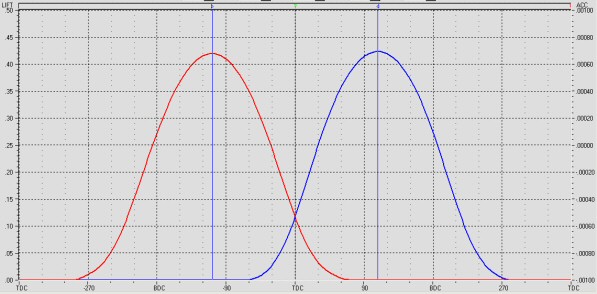
Figure 2: Cam Follower Position vs. Crankshaft Position
The commonly-quoted specifications for cam lobes are lift, duration, overlap, and lobe separation. The "Lift" spec is the maximum amount of travel the cam follower experiences as the cam lobe rotates under it. The "zero lift point" can be defined as the lift when the lobe is rotated 180 degrees from its maximum lift point, when the cam follower is said to be "on the base circle" (the constant-radius portion) of the lobe.
"Duration" is the number of crankshaft degrees of rotation during which the cam follower lift is greater than some specified value. Without knowing the lobe-lift value at which a duration is measured, the duration number is meaningless. That is because the cam lobe contains slow-motion ramps at the beginning and end of the lift period (detailed later) to take up clearances and to get the parts into motion gradually. The properties of those ramps can vary dramatically based on the intended use of the particular lobe design and the preferences of the lobe designer, so a cam specification that rates duration during those slow liftoff and landing periods is simply deceptive.
It has become an accepted industry practice (initiated by Harvey Crane back in the 1960's) to specify lobe duration as the number of degrees between the opening and closing points at which the lifter is 0.050 off the base circle.
Overlap, referring to Figure 2 above, is the number of degrees of crankshaft rotation during which both valves are off their seats at the same time, and measured as the number of degrees of crankshaft rotation during which both lifters are more than some specified distance from the zero-lift point (off base circle). Again, without this reference number, an overlap spec is essentially worthless. If we use the 0.050 tappet lift reference, the overlap of the cam shown in Figure 2 is roughly 40 degrees.
Overlap, as we will discuss later, is a very important influence on engine performance. Ed Iskenderian, one of the early developers of aftermarket camshafts, used to refer to overlap an "the 5th Cycle".
Figure 3 below is an expanded version of the lift profile of the intake lobe shown in Figure 2. The lift axis is unlabeled, but each graduation on the vertical axis represents 0.050 of lobe lift.
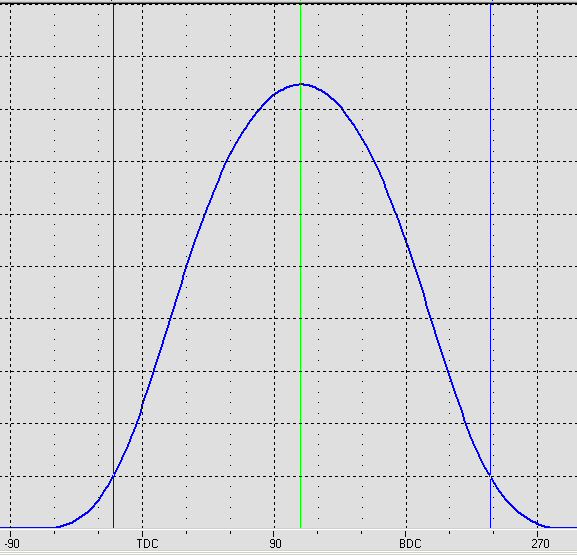
Figure 3: Cam Lobe (Lifter) Motion Profile
As is shown in Figure 3, the lobe begins to move the follower and the valvetrain at about 60 degrees before Top Dead Center (BTC) and doesn't stop moving the valvetrain until about 95 degrees AFTER Bottom Dead Center (ABC). However, it is clear that the motion (the steepness of the lift profile) closest to the opening and closing points is relatively slow by comparison to the motion at, for example, the TDC point.
Now, as you might expect, it can be difficult to determine on an actual engine, with sufficient accuracy, the exact crankshaft position when a valve begins to open or close, because of the gradualness of the motion at those points. And, the exact value of the crankshaft position relative to opening or closing points can be dramatically changed by changes in static clearance between the valve and the mechanism which moves it (rocker arm or cam follower).
That situation is not much improved if, instead of valve motion, you use lifter motion to determine these points. The reason is because a cam lobe does not start the lifter moving suddenly. Each cam lobe includes opening and closing "ramps" which allow the cam to start and to end the lifter motion in a gradual fashion. Therefore, the contemporary method of specifying cam lobe events is to state the number of degrees before and after TDC / BDC at which the lifter has moved to a distance of 0.050" from it's "zero-motion position". The zero motion position is measured when the follower is on the zero-lift portion of the lobe surface (known as the "base circle" or "heel" of the lobe) and the maximum lift portion of the cam lobe is opposite (180° away from) the lifter.
The two dark vertical lines in Figure 3 (to the left of TDC and to the right of BDC) show the 0.050 lift points on the opening and closing profile, where the steepness of the lift profile has increased quite a bit. Those 0.050 lift points occur at 20 degrees BTDC and 58 degrees ATDC.
With reference to the customary 0.050 lobe lift points, the duration of this lobe is 258 degrees (20 degrees BTDC, plus 180 degrees from TDC to BDC, plus 58 degrees ABDC). With respect to the effect on engine performance, that 0.050 duration figure is far more meaningful than what some manufacturers would advertise as the duration of that lobe (336 degrees, taken at the 0.003 lift points).
The lobe "centerline" (the point of max lobe lift, shown by the green line) is located at 105 degrees after TDC. In this example, the centerline occurs essentially midway between the opening and closing events. However, that is not necessarily the case. We now frequently use lobes with lift profiles that are asymmetric about the centerline in order to tailor opening and closing rates for various purposes.
The next curve (Figure 4) shows the same lift profile (blue) as was shown in Figure 3 above, but something has been added. The red curve represents the velocity of the follower with respect to the rotation of the cam, in units of inches per degree (or mm per degree if you are metrificated)..
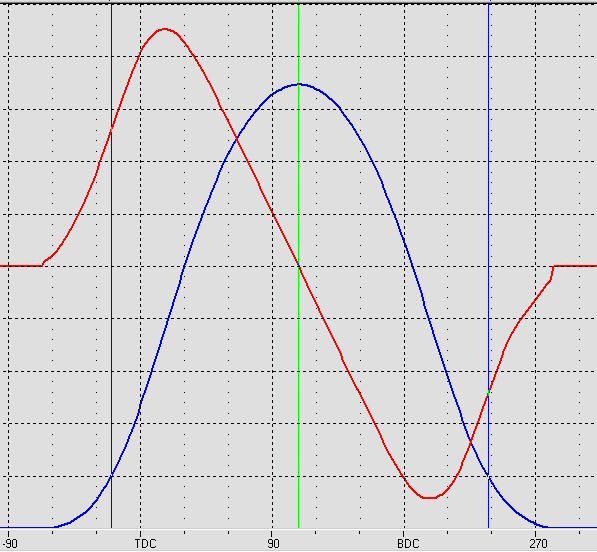
Figure 4: Cam Lobe (Lifter) Motion and Velocity Profiles
The next curve shows the cam follower acceleration (black) and velocity (red) which corresponds to the cam follower lift curve (blue).
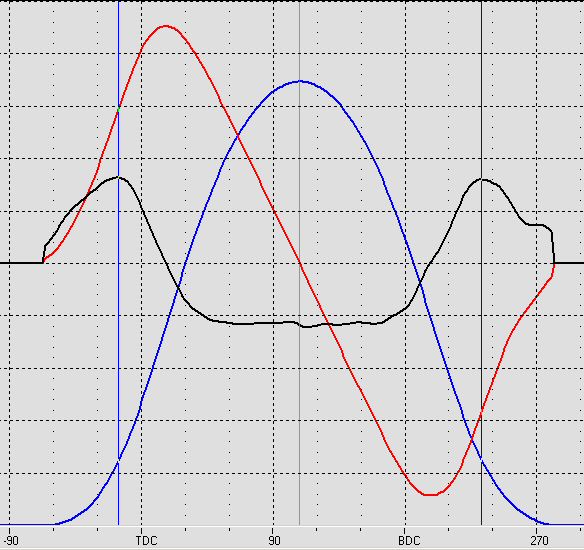
Figure 5: Cam Lobe (Lifter) Motion, Velocity and Acceleration Profiles
The cam lobe provides the "programmed" cam follower motion throughout the cycle. During approximately the first 1/4 of the cycle, the lobe also provides the force that accelerates the valvetrain components (cam follower, pushrod, rocker arm, valve, keeper, retainer and spring) in the opening direction. During the last approximately 1/4 of the cycle, the cam lobe provides the force that decerates the fast-moving valvetrain components to a stop and allows the valve to gently close on the valve seat. During the middle half of the cycle, the valvespring provides the forces necessary to decelerate the components to a stop at maximum valve lift, and to accelerate those components from that momentary stop to a high velocity back in the direction of valve closing.
The following graph shows the lifter motion caused by two different cam lobes, both of which have the same opening and closing specifications (as measured by the 0.050" travel points of the lifter). These plots are known as "lift curves". The horizontal axis is crankshaft rotation, referenced to TDC and BDC.
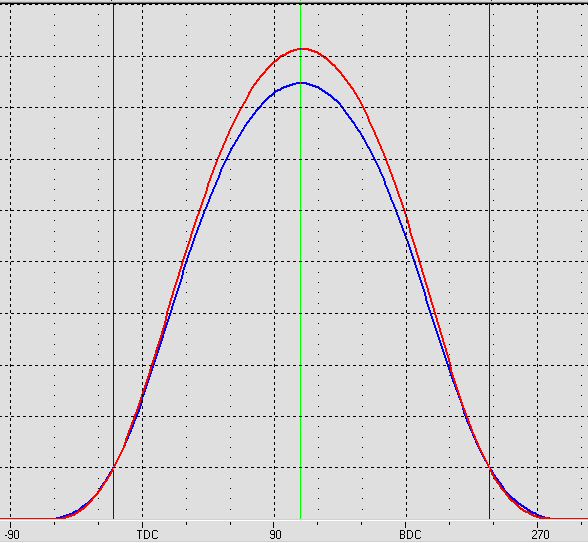
Figure 6: Cam Lobe (Lifter) Motion Profile Comparison
As you can see, both lift curves look fairly smooth. However, there is a substantial difference between the amount of force and vibration each of these two lobes impose on the remainder of the valvetrain they operate. Those differences can only be seen by examining the curves which show the velocity and the acceleration these lobes generate.
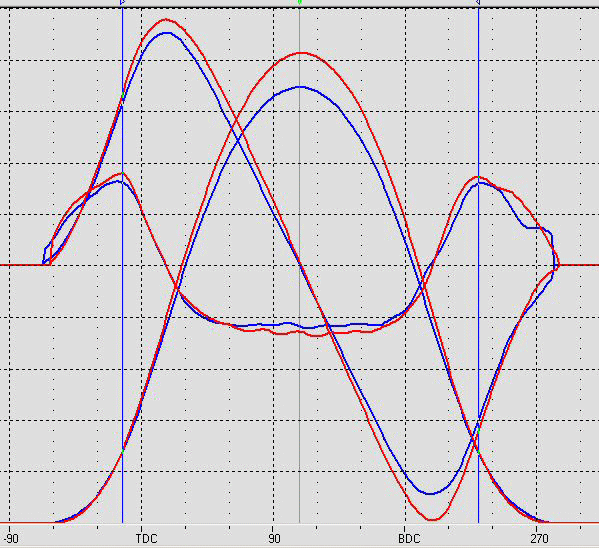
Figure 7: Cam Lobe (Lifter) Motion, Velocity and Acceleration Comparisons
More to come:
Curves: greater explanations and depth about preceding curves
Cam Followers: flat-cylindrical, flat-mushroom, radius, roller, rocker-arm
Pushrods: cylindrical, tapered, euler-column, stiffness, mass
Rocker Arms: shaft, pedestal, flat-end, roller end, needle bearing, plain
bearing, spherical pivot, mmoi
Springs: single, double, triple, rev-kit, round wire, ovate wire, rate, res freq, mass
Excitations: lift, acceleration, fourier content of curves
Forces and Deflections: acceleration, vibration
, resonance points

